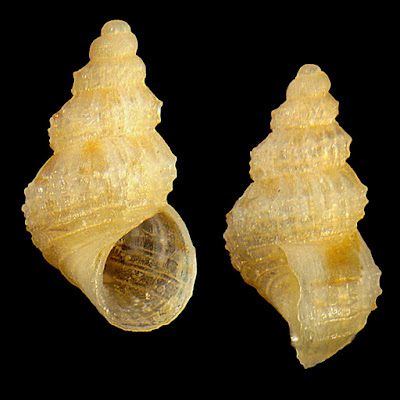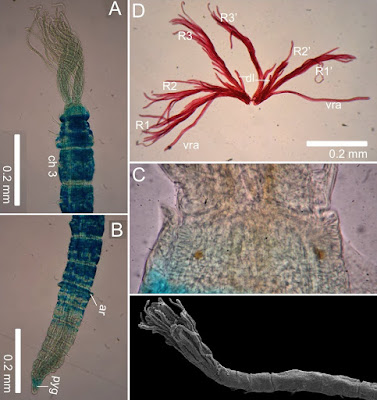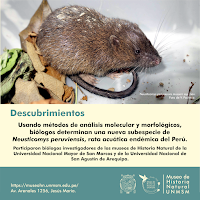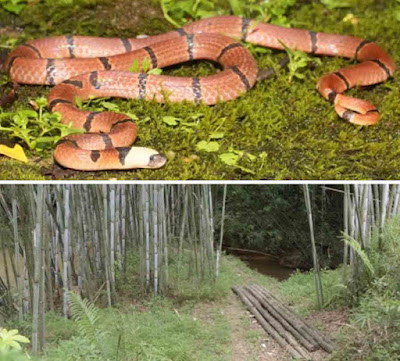[Most Recent Entries] [Calendar View]
Tuesday, April 28th, 2020
| Time | Event | ||||||||
| 3:52a | [Mollusca • 2020] Alvania pizzinii • Revision of the Recent Alvania scabra (Philippi, 1844) Complex (Gastropoda, Rissoidae) from the Mediterranean Sea with the Description of A New Species
Abstract Herein we revise several Recent Mediterranean species of the rissoid genus Alvania Risso, 1826: Alvania scabra (Philippi, 1844), Alvania sculptilis (Monterosato, 1877), Alvania sororcula Granata-Grillo, 1877, Alvania lucinae Oberling, 1970, Alvania josefoi Oliver & Templado, 2009 and Alvania scuderii Villari, 2017. They represent a rather homogeneous group of morphologically similar species, referred to as the Alvania scabra complex, which includes also some other species from the northeastern Atlantic. We designate a neotype for Rissoa scabra Philippi, 1844 and a lectotype for Rissoa oranica Pallary, 1900 to stabilize the use of the names. Alvania oranica (Pallary, 1900) is confirmed as a synonym of Alvania scabra (Philippi, 1844), and Alvania asperella (Granata-Grillo, 1877) is proposed as a synonym of Alvania sororcula (Granata-Grillo, 1877) [new synonymy]. Finally, we describe one new Mediterranean species: Alvania pizzinii Amati, Smriglio & Oliverio n. sp. from Levanzo Is., Sicily. Keywords: Mollusca, Gastropoda; Rissoidae; Mediterranean Sea; Alvania; new species; taxonomy Bruno Amati, Massimo Appolloni, Andrea Di Giulio, Danilo Scuderi, Carlo Smriglio and Marco Oliverio. 2020. Revision of the Recent Alvania scabra (Philippi, 1844) Complex (Mollusca, Gastropoda, Rissoidae) from the Mediterranean Sea with the Description of A New Species. Zootaxa. 4767(3); 415–458. DOI: 10.11646/zootaxa.4767.3.3 | ||||||||
| 9:12a | [Invertebrate • 2020] Euchonoides moeone • An Abundant New Genus and Species of Fan Worms (Polychaeta: Sabellidae) from Hawaii
Abstract A new genus and species of Hawaiian sabellid polychaete, Euchonoides moeone n. gen. et n. sp. is described. This new species has consistently been one of the most abundant polychaetes collected in Mamala Bay, Hawaii, reaching densities of 141,046 ind. m-2 and representing up to 30.6% of all polychaetes collected in that region. The species has a small body (~2 mm length) with a reduced number of abdominal chaetigers (8–10), and is distinguished by the presence of the following features: 1) three pairs of radioles; 2) radiolar skeleton with two longitudinal rows of cells from radiole base to third proximal pair of pinnules, remainder of each radiole skeleton with single rows of cells; 3) pinnules unpaired, alternating (snowflake arrangement); 4) thoracic uncini acicular with a large tooth above the main fang followed by a series of small ones; 5) thoracic chaetiger 3 enlarged; 6) a wide belt on third abdominal chaetiger; and 7) a pre-pygidial depression composed of three chaetigers, with lateral wings, among a combination of several others features. Histological sections have shown that the abdominal belt seems to be a clitellum-like structure where oogenesis takes place. The new genus is compared with other plesiomorphic genera sharing similar morphological features. Patterns of abundance of the new species are presented for the past 27 years in Mamala Bay. Keywords: Polychaeta, Euchonoides, Euchone, clitellum-like segment, histology, sewage outfall, abundance Family Sabellidae Latreille, 1825 Euchonoides n. gen. Diagnosis. Body short with a reduced number of abdominal chaetigers (8–10). Three pairs of radioles. Radiolar skeleton present in branchial lobes, radioles and pinnules. Each radiolar skeleton with two longitudinal rows of cells from radiole base to third proximal pair of pinnules, remainder of each radiole and all pinnular skeletons with single rows of cells. Pinnules unpaired, alternating (snowflake arrangement). Basal membrane absent; radiolar flanges absent; radiolar eyes absent. Dorsal lips without radiolar appendage. Ventral lips absent. Dorsal pinnular appendages absent. Ventral pinnular appendages present. Parallel lamellae absent. Ventral sacs absent. Radiolar lobes fused along dorsal midline; without dorsal or ventral basal flanges. Anterior peristomial ring distinctive, but no visible annulation between anterior and posterior peristomial ring. Peristomial eyes present. Peristomial vascular loops absent. Posterior peristomial ring collar incised ventrally; separated dorsally by distinct gap. Collar chaetae fascicles protruding from a short lobe, narrowly hooded chaetae. Glandular ridge on thoracic chaetiger 2 present. Superior thoracic notochaetae elongate, narrowly hooded. Inferior thoracic notochaetae includes bayonet and broadly hooded chaetae. Thoracic neuropodial uncini acicular, handles long, hoods absent, a large tooth above the main fang followed by a series of small ones. Companion chaetae absent. Thoracic chaetiger 3 always enlarged (2–3 times longer than wide). Ventral thoracic shields not differentiated. Neuropodial abdominal fascicles with elongate, narrowly hooded chaetae. Anterior abdominal uncini with square breasts, handle absent, and rasp-shaped dentition. Belt (clitellum-like) on third abdominal chaetiger present. Pre-pygidial depression composed by three chaetigers, with lateral wings. Uncini from pre-pygidial depression similar to those from anterior abdomen. Pygidium without anal cirrus. Pygidial eyes absent. Etymology. The genus name is a free combination of Euchone and the Latin sufix -oides, in relation to the similarities between the new genus with the genus Euchone. Euchonoides moeone n. sp. Etymology. The new species epithet derives from the Hawaiian language and the implied meaning of moeonein Hawaiian is ‘small worm that hides in the sand’. Distribution. The type locality is Mamala Bay, Oahu, Hawaii at the vicinity of Barbers Point sewage outfall at 70 m. This species has also been collected at Ala Wai Canal, Kailua Bay, and Waianae on Oahu from shallow subtidal to up to 100 m in fine and medium sand. Wagner F. Magalhães, Julie H. Bailey-Brock and María Ana Tovar-Hernández. 2020. An Abundant New Genus and Species of Fan Worms (Polychaeta: Sabellidae) from Hawaii. Zootaxa. 4763(1); 85–98. DOI: 10.11646/zootaxa.4763.1.7 | ||||||||
| 9:42a | [Mammalogy • 2020] Neusticomys peruviensis musseri • A Revision of Neusticomys peruviensis (Rodentia: Cricetidae) with the Description of A New Subspecies
Abstract Neusticomys peruviensis is a poorly known sigmodontine rodent of the tribe Ichthyomyini, represented in collections by only five specimens collected in five localities from lowland forests of central and southern Peru. Recent expeditions in Llanchama, in northern Peru, north of the Río Amazonas, and near Allpahuayo Mishana Natural Reserve (Loreto, Peru), were successful in obtaining three specimens of Neusticomys. Based on morphological and meristic data, we found the population at Llanchama is distinct from the allopatric populations of N. peruviensis, and other species of Neusticomys. A species distribution model also shows the population at Llanchama is not highly predicted by the set of variables of the known localities of N. peruviensis. However, sequence data from the mitochondrial cytochrome-b gene indicate that genetic distinctiveness is low. Because intraspecific variability is important to understand evolutionary and biogeographic processes, and in concordance with the polytypic species concept, we interpret the population at Llanchama to represent a new subspecies of N. peruviensis that we describe in this paper. Key words: biodiversity, Ichthyomyini, Loreto, Neotropics, Peru, Río Amazonas, Rodentia Sigmodontinae Wagner, 1843 Tribe Ichthyomini Vorontsov, 1959 Genus Neusticomys Anthony, 1921 Neusticomys peruviensis musseri, new subspecies Pacheco and Sánchez-Vendizú G. G. Musser’s Neusticomys Etymology.— The subspecific epithet honors Dr. Guy G. Musser, a remarkable and fine mammalogist, for whom we have a deep admiration. He is author of numerous and key contributions to South American mammalogy and other regions of the world. It is also a pleasure to read his elegant, precise, and encyclopedic contributions, among them the description (with A. L. Gardner) of N. peruviensis. Víctor Pacheco, Pamela Sánchez-Vendizú, Christian R Loaiza Salazar, Kateryn Pino, César Medina and Dan Vivas-Ruiz. 2020. A Revision of Neusticomys peruviensis (Rodentia: Cricetidae) with the Description of A New Subspecies. Journal of Mammalogy. gyaa011. DOI: 10.1093/jmammal/gyaa011 Neusticomys peruviensis es un roedor sigmodontino poco conocido de la tribu Ichthyomyini, representado en colecciones por solo cinco especímenes colectados en cinco localidades de bosques de tierras bajas del centro y sur del Perú. En recientes expediciones a Llanchama, en el norte de Perú, al norte del río Amazonas y cerca de la Reserva Natural Allpahuayo Mishana (Loreto, Perú), se lograron obtener tres especímenes de Neusticomys. Basados en datos morfológicos y merísticos, encontramos que la población de Llanchama es distinta de las poblaciones alopátricas de N. peruviensis y otras especies de Neusticomys. Un modelo de distribución de especies también muestra que la población de Llanchama no está altamente predicha por el conjunto de variables de las localidades conocidas de N. peruviensis. Sin embargo, las secuencias del gen mitocondrial citocromo-b indican que la diferenciación genética es baja. Debido a que la variabilidad intraespecífica es importante para comprender los procesos evolutivos y biogeográficos y en concordancia con el concepto de la especie politípica, interpretamos que la población de Llanchama representa una nueva subespecie de N. peruviensis, que describimos en este artículo. | ||||||||
| 9:52a | [Herpetology • 2020] Sinomicrurus peinani • A New Species of the Genus Sinomicrurus (Serpentes: Elapidae) from China and Vietnam
A new species of Sinomicrurus Slowinski, Boundy, and Lawson, 2001 is described herein based on a series of specimens. The new species, Sinomicrurus peinani sp. nov., occurs in southern China and northern Vietnam. Sinomicrurus peinani sp. nov. is distinguished from its congeners by the following combination of characters: (1) 30–35 black cross-bands on body and tail; (2) 13 dorsal scale rows throughout, all smooth; (3) white belly with black cross-bands or irregular spots; (4) broad white transverse bar on top of head with inverted V-shaped anterior margin, white bar wider than anterior black bar; and (5) frontal V-like, 1.3 times as long as wide. In addition, new occurrences of S. houi in Guangxi, China, and Vietnam are discussed.
Sinomicrurus peinani sp. nov. Diagnosis: All examined specimens possessed a small to medium-sized body, varying from 368 mm to 620 mm, as well as: (1) 30–35 black cross-bands on body and tail; (2) 13 dorsal scale rows throughout, all smooth; (3) white belly with black speckles or bands; (4) broad white transverse bar on top of head with inverted V-shaped anterior margin, white bar wider than anterior black bar; and (5) frontal V-like, 1.3 times as long as wide.
Ecological notes: The specimens were found in meadowland in bamboo forest (Figure 1A). An individual of Achalinus sp. was found in the stomach of Sinomicrurus peinani sp. nov. No data on diet or reproduction are available. Etymology: The species is named after Professor Pei-Nan Yu, a distinguished doctor in China, in recognition of his great contribution to the treatment of snakebite. We suggest the following common names for this species: “广西华珊瑚蛇” (Chinese) and Guangxi Coral Snake (English). Distribution: This species is currently known from China (Cangwu, Guangxi) and Vietnam (Cao Bằng and Vinh Phuc). The speciemens from Vietnam were unavailable for examination, but molecular phylogeney indicated that they should be conspecific with those from Cangwu, Guangxi, China (Supplementary Appendix S3). Qin Liu, Jiao-Wen Yan, Shao-Bing Hou, Ping Wang, Sang Ngoc Nguyen, Robert W. Murphy, Jing Che and Peng Guo. 2020. A New Species of the Genus Sinomicrurus (Serpentes: Elapidae) from China and Vietnam. Zoological Research. 41(2); 194-198. DOI: 10.24272/j.issn.2095-8137.2020.023 |
| << Previous Day |
2020/04/28 [Calendar] |
Next Day >> |

















